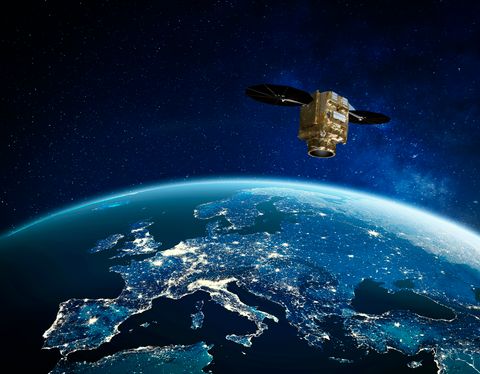The Moon in our sights

As the Orion spacecraft continues its historic mission around the Moon powered by the Airbus-built European Service Module (ESM), our engineers are already looking ahead to the future ‘lunar ecosystem’ – which is expected to represent a market value in the billions of euros during the next 20 years.
As a global aerospace giant pioneering the future, Airbus is set to play a key role in the upcoming era of renewed exploration to the Moon and beyond, bringing together skills and technologies for this new space ecosystem.
Why do humans need to live and work on the Moon and how will this happen?
The motivation for exploring the Moon and travelling deeper into our solar system is similar to what inspired the early pioneers here on Earth: adventure, prestige, geopolitics, economic value and discovering new resources. Adding to the motivation today are more modern opportunities for innovation and the development of technologies.
Alongside government spending on infrastructure and building blocks for cis-lunar space (which is defined as the area extending from Earth to just beyond the Moon's orbit), commercial enterprises are already investing to build viable businesses.
Our ambition at Airbus is to ultimately contribute to the full human experience in space, from low-Earth orbit to the Moon and beyond. It requires answers to the basic needs that humans and robots require as modern explorers: be it water to drink, food to eat, communications to keep in touch with Mother Earth, tools for ground-breaking science and discoveries, or a comfortable place to live, work and play for sustained periods in space.
Envisioning the future lunar architecture
Airbus teams are starting to work on such enabling building-blocks today, while also thinking creatively about how to maintain a significant role in future exploration – including defining and producing key elements of the lunar architecture.
This capability is underscored by the European Service Modules being built by Airbus for the next Orion spacecraft as Europe’s contribution through the European Space Agency, to NASA’s Artemis missions. The ESM provides the spacecraft’s crew with critical elements of life support, including water and oxygen and it regulates temperature aboard Orion. As importantly, the ESM serves as the Orion spacecraft’s main propulsion system, while also providing orbital manoeuvring and positioning control.

Looking beyond the ESM, we’re pursuing the Moonlight programme to build a business that is focused on providing lunar navigation and communications for both institutional and commercial users. This is led by our wholly-owned small satellite specialist, Surrey Satellite Technology Ltd., in partnership with the European Space Agency.
Under study: a lunar logistic lander and inter-orbital transporter
Airbus is developing a concept for a large multi-role logistic lander together with our partners at ESA. Designated Argonaut (also known as EL3 for European Large Logistics Lander), it will be capable of transporting up to 1.7 tonnes of cargo to any location on the lunar surface.
Separately, Airbus is working with the European Space Agency to look into the development of inter-orbital transportation vehicles and is a founding member of the Euro2Moon non-profit European platform to explore future uses of natural lunar resources and is working with space agencies around the world on various Moon missions.
Airbus doesn’t intend to go it alone. We bring together players from across the space ecosystem, working with the best people and technologies – including agencies and companies small and large – to add value to what’s next in Space: the global cis-lunar architecture of the future.
For additional information:
- See Exploring the Moon page
- What is NextSpace



